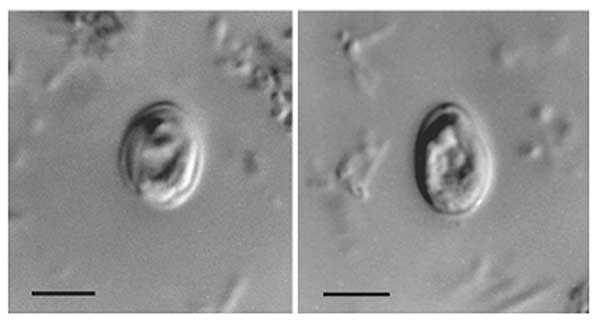Cryptosporidium
Enlarge text Shrink text- Work cat.: Giardia and Cryptosporidium in water supplies, 1991.
- ITIS Database, June 25, 2002(Cryptosporidium in family Cryptosporidiidae)
- Singleton dict. microbiol.(Cryptosporidium--the taxonomy of the genus is unsettled)
- Kudo protozoology, 1966:p. 699-700 (genus Cryptosporidium, family Eimeriidae)
- Syn. liv. org.:p. 585 (Cryptosporidium, only genus in family Crytosporidiidae)
- Zinsser microbiol.(Cryptosporidium)
- ASTI(Cryptosporidium)
Cryptosporidium, sometimes called crypto, is an apicomplexan genus of alveolates which are parasites that can cause a respiratory and gastrointestinal illness (cryptosporidiosis) that primarily involves watery diarrhea (intestinal cryptosporidiosis), sometimes with a persistent cough (respiratory cryptosporidiosis). Treatment of gastrointestinal infection in humans involves fluid rehydration, electrolyte replacement, and management of any pain. For cryptosporidiosis, supportive treatment and symptom management are the primary treatments for immunocompetent individuals. Anti-diarrheal medication, such as Loperamide, may be effective in slowing the rate of diarrhea. Nitazoxanide is the only drug approved for the treatment of cryptosporidiosis in immunocompetent persons. Supplemental zinc may improve symptoms, particularly in recurrent or persistent infections or in others at risk for zinc deficiency. Cryptosporidium oocysts are 4–6 μm in diameter and exhibit partial acid-fast staining. They must be differentiated from other partially acid-fast organisms including Cyclospora cayetanensis.
Read more on Wikipedia >
 Topic
Topic




